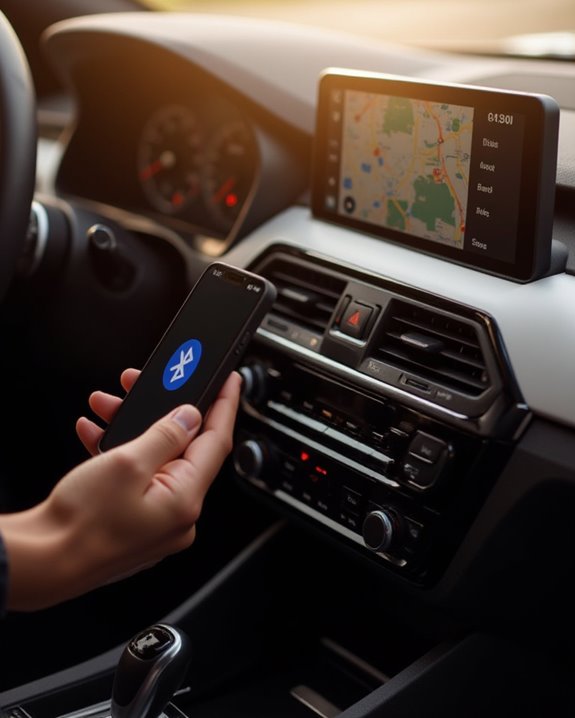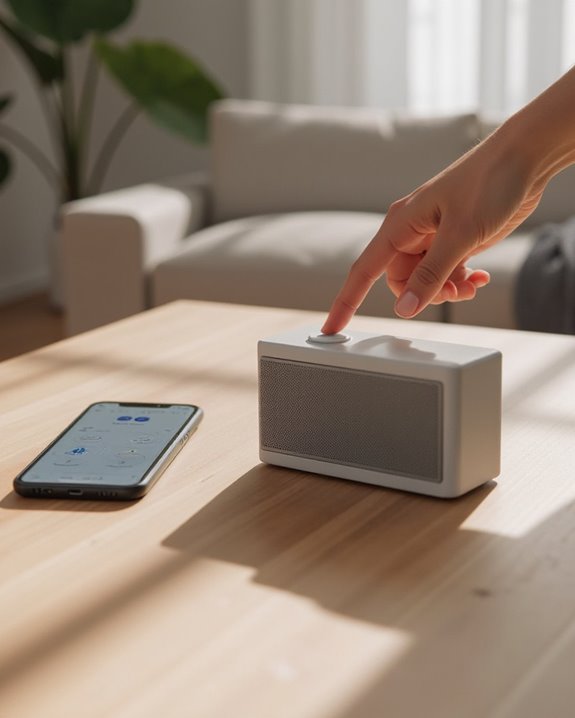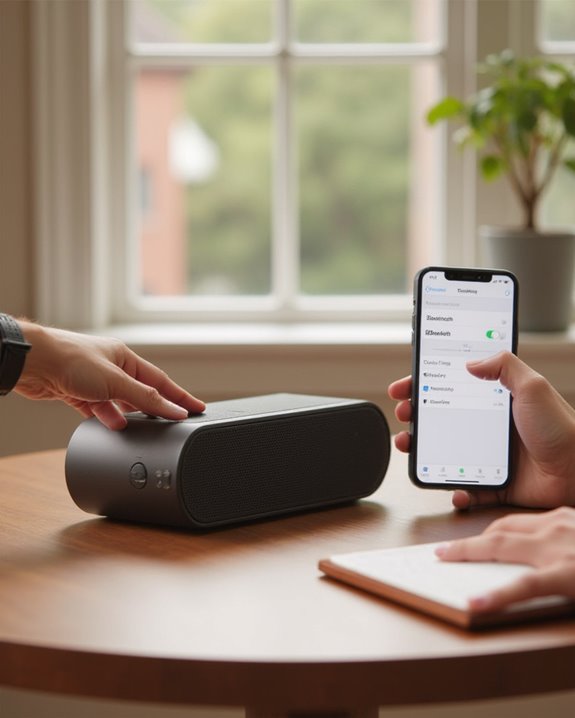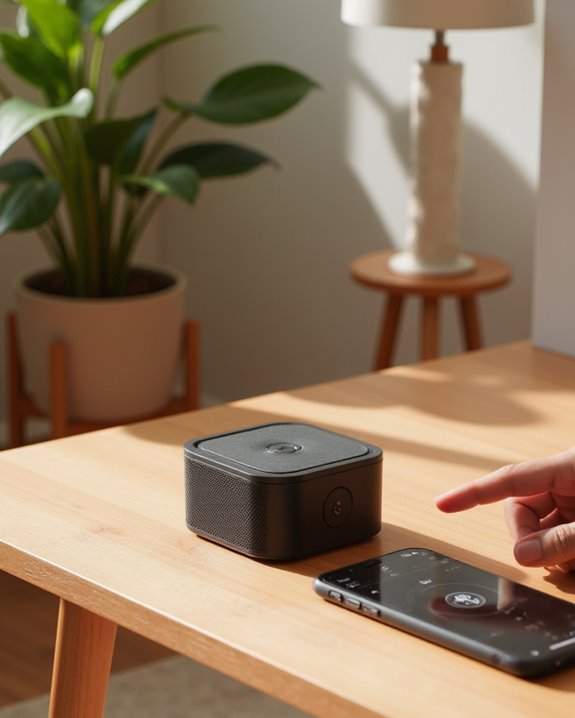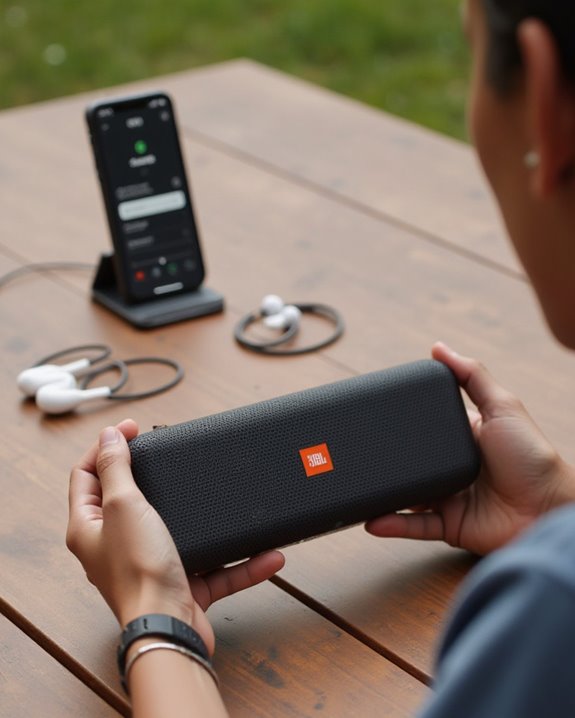Connecting a mobile phone to car speakers offers several methods based on vehicle capabilities. For modern cars, enable Bluetooth on both devices, pair them through settings, and confirm the connection code. Alternatively, use a USB cable in file transfer mode, or connect via a 3.5mm auxiliary cable from the phone’s headphone jack to the car’s aux port. For older vehicles, consider FM transmitters or cassette adapters. The following guide explores each connection option with specific troubleshooting techniques.
Key Takeaways
- Enable Bluetooth on your car stereo and smartphone, then pair the devices for wireless audio streaming within a 30-foot range.
- Connect your phone using a compatible USB cable, switch to file transfer mode, and select USB audio on your car stereo.
- Use a 3.5mm auxiliary cable between your phone’s headphone jack and car’s AUX port for direct audio transmission.
- For older vehicles, install an FM transmitter to broadcast phone audio wirelessly to your car radio’s FM frequency.
- If connection issues persist, restart devices, toggle Bluetooth, or update your phone and car stereo firmware.
Wireless Bluetooth Connection Setup
Setting up a Bluetooth connection between a mobile phone and car speakers represents the most convenient method for wireless audio streaming in vehicles today. To begin, drivers must activate the Bluetooth functionality on their car stereo system, ensuring it remains in discoverable mode for the pairing process.
On an Android device, users should go to Settings, locate the Bluetooth section, and enable the feature. The phone will scan for available devices, displaying the car’s audio system in the list of nearby Bluetooth devices. Selecting the car stereo initiates the pairing sequence, often requiring confirmation of a security code on both devices. Once successfully paired, the connection establishes automatically during future drives, maintaining connectivity within a 30-foot range for ideal audio transmission via Bluetooth without interference from obstacles or electronic devices.
For enhanced reliability, opting for speakers with Bluetooth 5.0+ technology can provide stable connections and reduced power consumption during your drives.
USB Cable Connection Methods
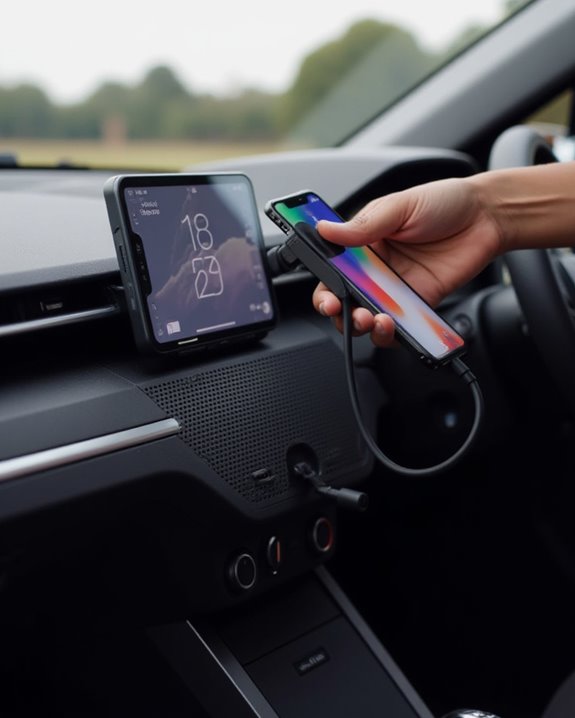
While Bluetooth offers wireless convenience, a USB cable connection provides a reliable alternative for connecting mobile devices to car audio systems. To connect using this method, users should insert one end of a compatible USB cable into their Android phone’s port and the other into the car’s stereo USB port. The phone must then be switched to file transfer mode, such as MTP, enabling the car system to access stored music files.
For best results, make sure the USB cable matches the phone’s port type (like USB Type-C), and keep the device accessible during the initial connection process. Users experiencing difficulties should navigate to their phone’s USB configuration settings to select the appropriate data transfer option. If problems persist, trying a different cable or USB port often resolves common connectivity issues. Additionally, for vehicles equipped with modern adapters, this USB connection can be paired with USB-C charging capabilities to ensure your device stays powered during use.
AUX and Wired Audio Options
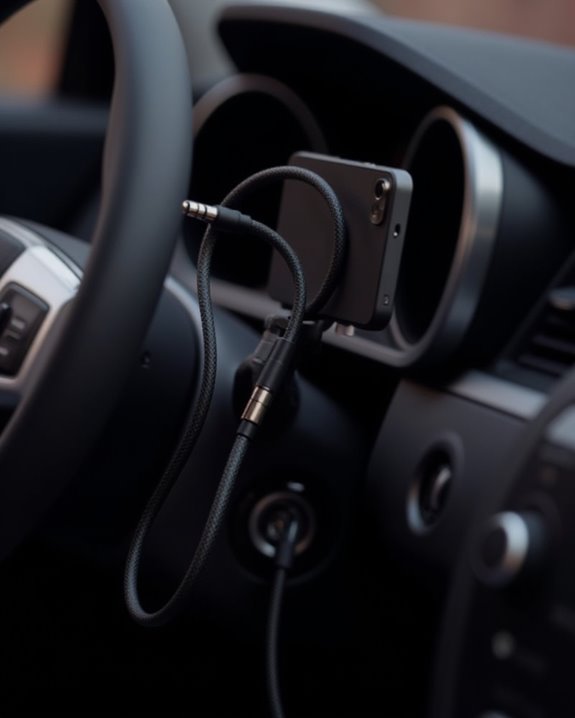
Traditional wired connections provide reliable, high-quality audio alternatives for drivers who prefer non-wireless methods or have vehicles without Bluetooth capabilities. The most common approach involves a 3.5mm aux cable, which connects a mobile device’s headphone jack to the car’s aux port, creating a direct audio pathway that plays music with minimal setup requirements.
For vehicles equipped with cassette players, a specialized cassette adapter offers backward compatibility by inserting into the tape deck while connecting to the phone’s audio output. USB connections present another versatile option, allowing Android users to transmit audio through their charging port while simultaneously powering their device. When connected via USB, many phones require switching to file transfer mode for proper audio recognition by the car’s system, ensuring seamless playback through the vehicle’s speakers with consistently clear sound quality.
Additionally, for enhanced connectivity in car setups, speakers like the SOULION C10 offer 3.5mm auxiliary inputs to improve audio integration.
Troubleshooting Common Connection Problems
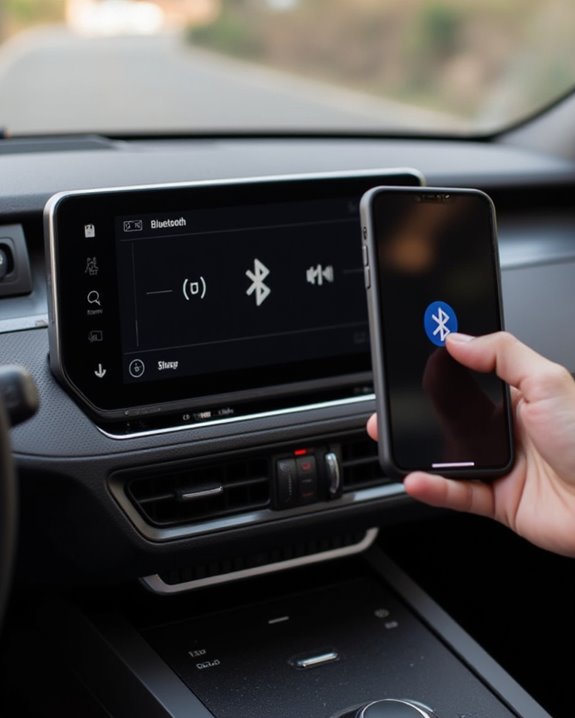
When connection issues arise between mobile devices and car audio systems, drivers often face frustrating situations that interrupt their listening experience. To resolve these problems, make sure the AUX adapter is properly connected and check mobile device settings to confirm audio output is correctly routed. For Bluetooth difficulties, try restarting the device and toggling Bluetooth off and on before attempting to pair again.
If CarPlay isn’t working well, take a look at your iPhone’s iOS version and try a different USB cable or port. When calls only ring on your phone instead of car speakers, verify Bluetooth is enabled with Auto-Join for Wi-Fi. For persistent connection issues connecting your car via USB or Bluetooth, update both your device’s software and the car’s stereo firmware.
Advanced Solutions for Older Vehicles
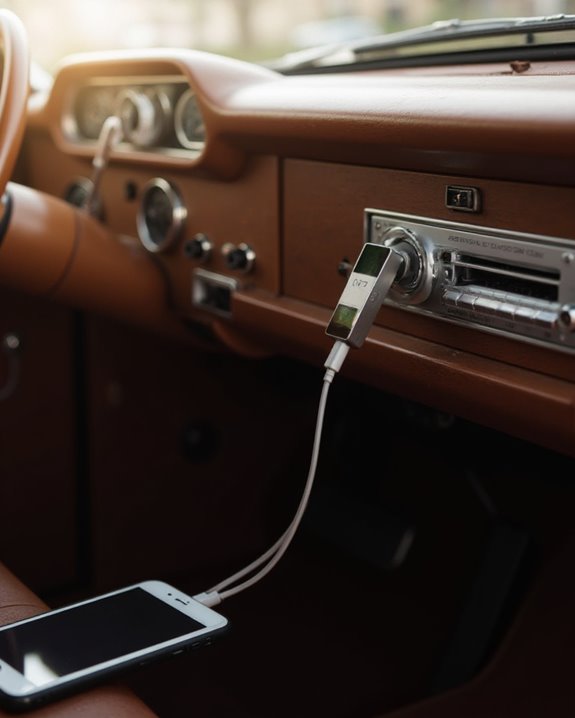
Owners of vintage cars needn’t miss out on modern audio conveniences despite their vehicles’ dated technology. Several retrofit options exist to stream music from smartphones through older Car audio systems, ensuring everyone can enjoy their digital libraries while driving.
Vehicles equipped with cassette decks can utilize cassette adapters that connect to a phone’s 3.5mm headphone jack, while cars from the 1990s with auxiliary ports allow direct connection via a standard aux cable. For vehicles lacking these features, FM transmitters broadcast audio to the car’s radio, creating a wireless solution for playing music through existing speakers. Models from the mid-2000s with USB ports can play music directly from Android devices when set to file transfer mode. Adapter cables, such as USB-C to 3.5mm converters, bridge technology gaps for newer phones with older vehicles.
Frequently Asked Questions
How Do I Connect My Phone to My Car Speakers?
Individuals can establish connections between their phones and car speakers through various intimate methods: using an Aux Cable, plugging in a USB Adapter, employing an FM Transmitter, or creating a Wired Link via Bluetooth pairing.
Why Won’t My Phone Play Through My Car Speakers?
Phone audio may not play through car speakers due to Volume Issues on either device, App Glitches affecting audio routing, Signal Interference disrupting the Bluetooth connection, or Battery Problems limiting the phone’s performance during playback.
How Do I Pair My Phone to a Speaker?
Like a key finding its perfect lock, speaker pairing begins with enabling Bluetooth on both devices. For wireless setup, users should activate device syncing mode on the speaker before selecting it during audio linking from their phone.
How to Connect Phone to Car Bluetooth for Music?
To connect a phone for music, one should activate Bluetooth settings on both devices. Streaming options vary by audio formats supported. Device battery consumption increases during playback. Regular firmware updates guarantee ideal connectivity between intimate audio companions.

